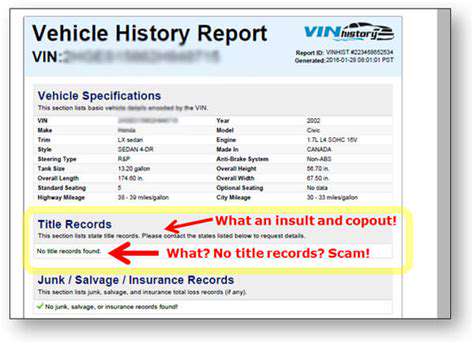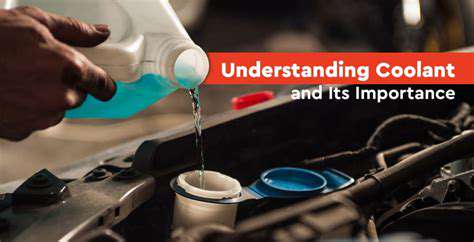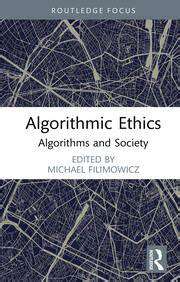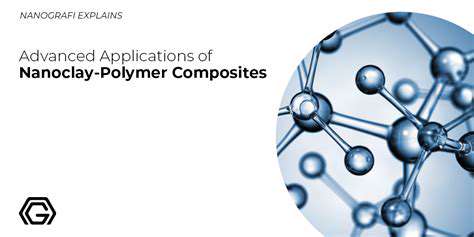Spilled Drinks: A Common Culprit
Spilled drinks are a frequent culprit behind car interior stains. Whether it's a forgotten cup of coffee, a juice box mishap, or a soda that's sprung a leak, the resulting stains can range from subtle discoloration to sticky, gooey messes. Prompt action is key to preventing these spills from becoming permanent fixtures in your car's upholstery. Understanding the type of liquid spilled, such as sugary drinks or acidic juices, is crucial for effective cleaning strategies.
Often, the longer a spill sits, the more difficult it is to remove. Immediate blotting with a clean cloth or paper towel is essential to absorb as much liquid as possible. Never rub the stain, as this can spread the liquid and further damage the fabric.
Food Debris: Hidden Hazards
Crumbs, bits of food, and sticky remnants can quickly accumulate in your car's interior, leading to unsightly stains and odors. These particles can become embedded in fabric, carpets, and even leather surfaces, leaving behind stubborn marks that are hard to remove. Regular cleaning and maintenance are vital to prevent this buildup from becoming a persistent problem.
Regular vacuuming and periodic deep cleaning can help remove food debris and prevent it from becoming embedded. Consider using specialized upholstery cleaning solutions designed for car interiors to tackle stubborn stains effectively.
Gum and Sticky Substances: The Persistent Problem
Chewing gum is a notorious car interior stain culprit. Its sticky nature can adhere to fabrics, leather, and even plastic surfaces, leaving behind unsightly, difficult-to-remove residue. Prompt action is essential to effectively remove gum before it hardens and becomes embedded.
To remove gum, carefully apply ice to the area to harden the gum. Once hardened, gently scrape off as much of the gum as possible. Follow up with a specialized gum remover or a mixture of rubbing alcohol and dish soap to dissolve any remaining residue. Be cautious not to damage the underlying fabric while cleaning.
Pet Accidents: A Delicate Balancing Act
Pet accidents are another common source of car interior stains. Whether it's urine, feces, or vomit, these substances can quickly stain and soil your car's interior. Immediate action is crucial to prevent the stain from setting in and the odor from becoming permanent.
Using pet-specific cleaning solutions and blotting techniques is vital for removing pet accidents. These solutions are formulated to neutralize odors and effectively remove stains, without harming the car's interior materials. Careful attention to detail is critical to restore your car's interior to its pristine condition.
Cosmetics and Makeup: Hidden Beauty Marks
Cosmetics and makeup can leave behind unsightly stains on your car's interior. Lipstick, eyeshadow, and other makeup products can permanently stain upholstery and other surfaces if not addressed promptly. A quick response is vital to preventing these cosmetic stains from becoming a long-term problem.
Ink and Marker Stains: The Art of Removal
Ink and marker stains are a common occurrence, especially if children are involved. The fast-drying nature of ink makes it difficult to remove completely. Addressing ink stains promptly is crucial to minimizing damage and achieving effective removal.
Using specialized ink stain removers or a mixture of rubbing alcohol and water can help dissolve the ink stain. Test any cleaning solution in an inconspicuous area first to avoid further damage to the car's interior. Patience and persistence are key in removing these stubborn stains.
Tackling the Tangled Threads: Removing Liquid Spills
Understanding the Spill's Composition
Identifying the type of liquid spilled is crucial for effective stain removal. Different liquids react differently to cleaning solutions, and using the wrong product can worsen the damage or leave behind stubborn residue. For instance, a sugary drink like soda will require a different approach than a greasy substance like oil, and knowing this initial composition will streamline the process and prevent further issues. Thorough identification is your first step towards a successful cleanup.
Immediate Action is Key
Time is of the essence when dealing with liquid spills. Prompt action will significantly increase your chances of complete stain removal. Quickly blotting up the excess liquid with absorbent materials like paper towels or clean cloths prevents the stain from spreading and seeping into the fabric or upholstery. The longer the liquid remains on the surface, the more difficult it becomes to remove completely, potentially leading to permanent damage.
Choosing the Right Cleaning Supplies
Utilizing appropriate cleaning solutions is essential for successful stain removal. Avoid harsh chemicals or abrasive cleaners that could damage the car's interior. Instead, select mild, specialized cleaning products specifically designed for car interiors. Consider the material of the affected area. Leather requires different cleaning agents than fabric, so choosing the right cleaning product for the material is essential to prevent further damage.
Blot, Don't Rub!
Vigorous rubbing can spread the stain and potentially cause further damage to the car's interior. Instead of rubbing, gently blot the affected area with a clean cloth or paper towel. This will absorb the remaining liquid without causing friction or spreading the stain. Blot in circular motions, working from the outside of the spill inwards to prevent the stain from expanding.
Testing in an Unobtrusive Area
Before applying any cleaning solution to the entire stain, test it on an inconspicuous area of the car's interior. This will determine if the solution will cause discoloration or damage to the material. This precautionary step is crucial to prevent unexpected problems and ensure the cleaning process is safe and effective. A small, hidden section is ideal for this preliminary test.
Following Up with a Final Rinse
After blotting and applying cleaning solution, carefully rinse the affected area with cool water. Ensure that no cleaning solution remains on the surface. This will eliminate any lingering residue and prevent spots or discoloration. A clean, damp cloth, or if appropriate, a gentle spray of water, should be used to remove any residue.
Preventing Future Spills
Taking preventative measures can minimize the likelihood of future spills. Use protective mats or covers in your car to safeguard your interior from potential spills. Encourage passengers to be mindful of their drinks and food consumption within the vehicle. Proactive steps like this can go a long way in keeping your car's interior clean and stain-free for years to come. These proactive steps can significantly reduce the need for extensive stain removal.
Conquering the Crumb Catastrophe: Removing Food Stains
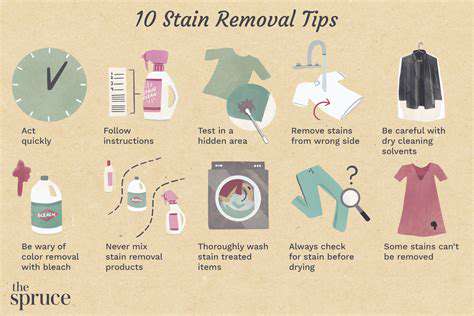
Understanding the Problem
The kitchen, a place of culinary creation, often becomes a battlefield of crumbs, bits of food, and stray ingredients. These seemingly insignificant particles can quickly accumulate, creating a frustrating and unappealing environment. Addressing this crumb catastrophe proactively is crucial for maintaining a clean and functional kitchen space. It's not just about aesthetics; a cluttered kitchen can also impact your workflow and efficiency.
Many factors contribute to the crumb problem, from the type of food preparation to the frequency of cleaning. Understanding these contributing factors is the first step in developing effective solutions.
Prevention is Key
Preventing crumbs from accumulating in the first place is far more efficient than cleaning up after the fact. A proactive approach involves thoughtful habits during meal preparation. Using dedicated cutting boards and placing them on a tray can significantly reduce the spread of crumbs and make cleanup much easier. Employing airtight containers and proper storage solutions for food items can also minimize the risk of spills and crumbs.
Designated Cleaning Zones
Creating designated cleaning zones can significantly streamline the process. Designate a specific area for storing cleaning supplies and tools. This will ensure that cleaning materials are easily accessible and prevent them from becoming scattered throughout the kitchen.
Another designated zone should be for collecting crumbs and spills. Using a small trash can or a designated container for collecting crumbs will make it easier to dispose of them quickly.
Effective Cleaning Techniques
Knowing the right cleaning techniques for different surfaces is essential for effective crumb removal. For example, using a damp cloth and a mild detergent on countertops can effectively remove crumbs. For hard floors, a vacuum cleaner or a broom is the best option to tackle crumbs efficiently.
Sticky mats or specialized crumb traps can be very helpful in preventing crumbs from spreading and accumulating. They can be placed under food preparation areas to catch loose crumbs and prevent them from getting into the main kitchen floor.
The Power of Regularity
Maintaining a clean kitchen is not a one-time event; it requires consistent effort. Regular cleaning schedules, even if they are brief, are key to preventing a build-up of crumbs. By establishing a routine for cleaning up spills and crumbs immediately, you can keep your kitchen from becoming a mess. This will also save you time and energy in the long run.
Specialized Tools and Gadgets
The market offers a variety of specialized tools and gadgets designed to tackle crumbs effectively. Consider investing in a good quality vacuum cleaner with a crevice tool for hard-to-reach areas. For smaller crumbs, a handheld vacuum cleaner can be very useful. These tools can make the process of cleaning up crumbs more efficient and less time-consuming.
The Impact of Food Preparation
The type of food prepared also significantly impacts the amount of crumbs generated. Preparing foods that create fewer crumbs, such as cooked meals, can contribute to a cleaner kitchen. Consider the type of food you're preparing and adjust your cleaning strategy accordingly to minimize the mess. For example, using parchment paper under baking sheets can reduce the amount of crumbs on your countertop.
Zero Trust represents a security framework that operates on the assumption that no entity—whether user, device, or application—should be inherently trusted, even if it resides within a traditional network perimeter. This model demands constant validation and authorization for every access attempt, irrespective of origin or identity. It marks a radical departure from conventional security by shifting focus from network trust to universal verification. Deploying this framework in cloud settings necessitates a well-thought-out plan and a resilient security infrastructure.
Unveiling the Upholstery: Dealing with Grease and Oil Stains
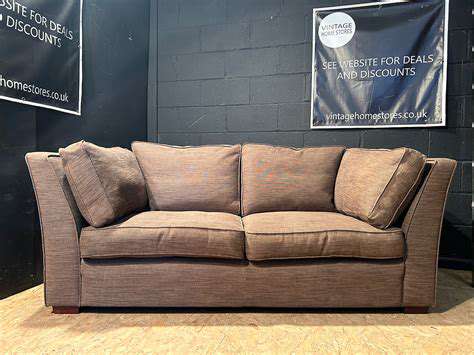
Understanding the Importance of Upholstery
Upholstery goes far beyond mere aesthetics; it significantly impacts the comfort, durability, and overall appeal of a space. Choosing the right upholstery material, design, and color can dramatically alter the atmosphere of a room, creating a cozy retreat or a vibrant, modern statement. The correct selection can contribute to a functional and visually stunning environment. This careful consideration extends beyond aesthetics; it plays a crucial role in the longevity and practicality of the furniture piece.
From the plush comfort of velvet to the resilient strength of linen, the diverse range of upholstery materials offers a plethora of options to suit various needs and styles. Understanding the properties of each material – its breathability, durability, and resistance to stains – is key to making an informed decision that aligns with both your personal preferences and the intended use of the furniture.
Choosing the Right Fabrics for Your Needs
The durability of upholstery fabric is paramount. A high-quality fabric will withstand daily use and resist wear and tear, ensuring the furniture remains attractive and functional for years to come. Consider the lifestyle of the space where the furniture will be placed. If it's in a high-traffic area, a more robust fabric might be necessary.
Beyond durability, consider the aesthetic appeal of the fabric. The color, pattern, and texture of the upholstery fabric significantly influence the overall ambiance of the room. A deep, rich velvet can create a luxurious feel, while a light, airy linen can evoke a sense of tranquility. Careful consideration of these elements can elevate the overall design of the space.
Different fabrics have different maintenance requirements. Some fabrics are easier to clean and maintain than others. Understanding these differences is crucial for ensuring that your upholstery remains in top condition for years to come.
Maintaining Your Upholstery for Longevity
Regular cleaning and maintenance are essential for preserving the beauty and longevity of your upholstery. Proper care can significantly extend the lifespan of your furniture investment. This often involves using the appropriate cleaning methods for the specific fabric, avoiding harsh chemicals, and scheduling professional cleaning when necessary.
Regular inspections can help identify potential issues early on. Checking for tears, stains, or signs of wear and tear allows for prompt action to prevent further damage and maintain the pristine condition of your upholstery. This proactive approach helps avoid costly repairs and extends the life of your furniture.
Trends in Upholstery and Design
Upholstery trends are constantly evolving, reflecting the latest design sensibilities and technological advancements. Staying abreast of these trends can help you make informed choices that complement your personal style and add a contemporary touch to your space. New materials and techniques are emerging in the world of upholstery, leading to innovative designs and increased functionality.
From sustainable and eco-friendly materials to innovative design concepts, the industry is constantly pushing boundaries. This dynamic environment provides a plethora of possibilities for creating unique and personalized spaces, allowing you to express your style and individuality through the thoughtful selection of upholstery.
